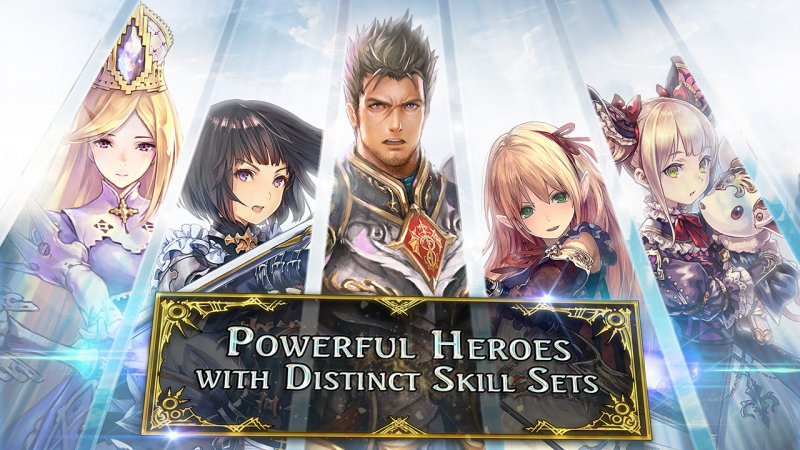Take drawings of Japanese anime, add collectible cards and a style of play that traces the super famous title Blizzard, seasoned with a plot not too complicated and you will get Shadowverse: in a landscape so rich in games of this type, aims to compete with Hearthstone already having 8 million accounts active mainly in Japan, South Korea and North America.
In the country of the Rising Sun, the game developed by Cygames was released in mid-2016 and is available on Steam from mid-October; two expansions (Darkness Evolved and Rise of Bahamut) of cards have already been released and a third one is coming in late March.
There are several elements that have contributed to the success of this title: it certainly has a good single player campaign mode, divided into chapters of increasing difficulty, which helps to familiarize with the seven classes in Shadowverse (which we will discuss in more detail at short),
then, despite the many cards released, the game takes the new players by hand immediately giving a very high number of sachets and, finally, has a system of objectives and daily missions with rewards useful for the purchase of other envelopes or for inputs aimed at the arena mode.
All of this will help you keep your hands away from your wallet. Yes, because Shadowverse, also released for iOS and Android mobile platforms, is a completely free title with Hearthstone purchase model and the ability to destroy and build cards and where you can also buy real money packs or virtual coins called Rupies however, playing normally, you get a satisfying number for free even without spending a penny, unless you want all the cards right away and at any cost. The number of cards in a deck is 40, while in the arena mode they use 30, and the gameplay, beyond the differences between the classes that we will examine later, is very classic,
The effect of the card is not written on it but at any time you can click on it to make the box appear in which the rules of operation are described and this has the undoubted advantage of leaving much more space for the artwork, one some Shadowverse highlights, especially if you love Japanese designs.
The cost of throwing a card must be met using the orbs (another way to call the mana) that increase with the advance of the rounds and, to win the game, you have to bring the opponent to zero life points from the 20 that you they have departing. Let’s take a closer look at the game classes and the original Shadowverse mechanics.
Shadowverse combines the art of Japanese designs with a card game with very original mechanics
EVOLUTIONS
Before introducing the seven characters of Shadowverse, each with a personal style of play that identifies precisely the class, we must talk about the other unique element,
the mechanics of evolution: all the followers (the servants have a rather “social” name) they have an “evolved” version and, after 4 rounds from the beginning of the game, each player will activate two or three indicators of evolution (he receives three who start second and two who starts first) that can be used to enhance a creature just evoked or already played in previous turns.
When you activate the evolution, if the creature has just been launched it can attack only the other creatures of the opponent, otherwise you can choose any target.
This element makes the game strategy vary substantially as many other cards activate their effect in the presence of evolved servants or when an evolution occurs. As we said, the classes of the game are identified by unique characters: it’s time to know them. Arisa is a cant … ehm, she’s a young Archer of the Forestcraft class and the peculiarity of her style of play is the
presence of many cards that fill your hand of Fata 1/1 follower at the cost of 1; these little creatures are used to help you cast spells or creatures much more powerful, in fact, thevisually the game interface will show you how many cards have been played making it even more immediate and simple to use.
Erika belongs to the Swordcraft class whose particularity is represented by the servants who interact enhancing or giving each other mutual benefits depending on the military grade so, for example, an officer-type follower could gain advantages if it comes into play and a commander is present.
Rowen is a Knight of the Dragoncraft class who, a bit like the Druid in Hearthstone, tries to increase his orbs quickly with cards that can give you extra and this is necessary to reach the Overflow threshold (7 orb) that allows you to play his most powerful cards.

